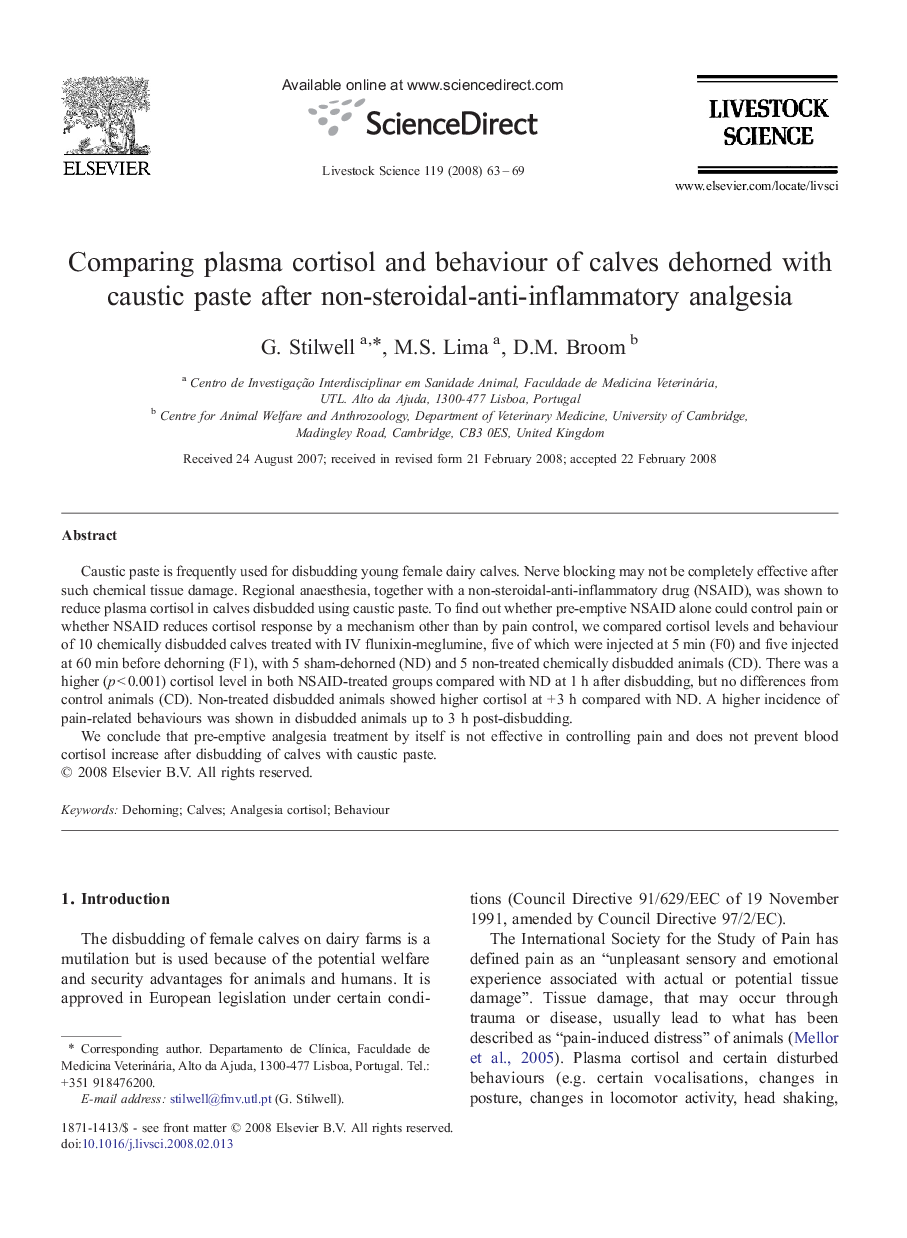| Article ID | Journal | Published Year | Pages | File Type |
|---|---|---|---|---|
| 2448452 | Livestock Science | 2008 | 7 Pages |
Caustic paste is frequently used for disbudding young female dairy calves. Nerve blocking may not be completely effective after such chemical tissue damage. Regional anaesthesia, together with a non-steroidal-anti-inflammatory drug (NSAID), was shown to reduce plasma cortisol in calves disbudded using caustic paste. To find out whether pre-emptive NSAID alone could control pain or whether NSAID reduces cortisol response by a mechanism other than by pain control, we compared cortisol levels and behaviour of 10 chemically disbudded calves treated with IV flunixin-meglumine, five of which were injected at 5 min (F0) and five injected at 60 min before dehorning (F1), with 5 sham-dehorned (ND) and 5 non-treated chemically disbudded animals (CD). There was a higher (p < 0.001) cortisol level in both NSAID-treated groups compared with ND at 1 h after disbudding, but no differences from control animals (CD). Non-treated disbudded animals showed higher cortisol at + 3 h compared with ND. A higher incidence of pain-related behaviours was shown in disbudded animals up to 3 h post-disbudding.We conclude that pre-emptive analgesia treatment by itself is not effective in controlling pain and does not prevent blood cortisol increase after disbudding of calves with caustic paste.
